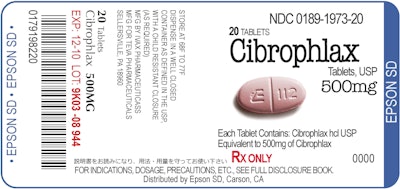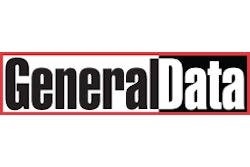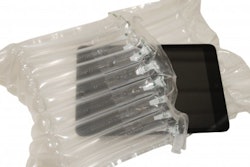
Labels are a critical avenue for communicating information between pharmaceutical manufacturers and consumers. They also serve as an important marker and reference to help meet serialization regulations aimed at harmonizing pharmaceutical manufacturing and distribution, securing the supply chain and safety of consumers and reducing the instances of drug counterfeiting.
However, a number of emerging trends, including multi-lingual label regulations and adherence packaging, are further escalating the label’s role as an information vehicle. Combine that with an increasingly international supply chain and there’s no question that manufacturers must place a laser-like focus on label clarity and language. They must also understand that securing the safety of the supply chain will ultimately help secure the safety of patients.
Below is a look at how durable color labels can address these trends:
Adherence packaging
Half of the estimated 187 million Americans who take one or more prescription medicines—or up to 93.5 million patients—do not take these drugs as prescribed. In fact, studies show that 20% to 30% of prescriptions are never filled by patients, while 50% to 60% of medications to treat chronic disease are not taken as prescribed.
From a cist standpoint, new research estimates that $105 billion is wasted annually on medication therapy non-adherence, of which 69%—or $72.5 billion—is spent on hospitalizations. Other findings project that poor medicine adherence, along with suboptimal prescribing, drug administration and diagnosis, costs the health care system an estimated $290 billion per year in avoidable medical spending and lost work productivity, translating into 13% of total health care expenditures.[1]
Bottom line: non-adherence is a huge, complicated issue. There are behavioral, economic, medical and policy-related factors that impact adherence, and while patient-friendly labels and packaging can’t solve all of them, they can make a difference when it comes to educating consumers about administration and use. The key to successful packaging is to make sure that both its design and its content support the education of patients, make the administration of the drug easier and even remind patients to get their refills before they run out of medication, increasing refill compliance.
Color has an important role to play here. Target Corp. proved this 10 years ago when it introduced a flattened prescription bottle with easier-to-read labels and plastic rings that could be color-coded for each family member. While not a new example, it’s a great proof point that visual cues are critical for consumers. Color labels can support patient adherence in several ways, including providing easy-to-understand pictorial aids to convey dosage and administration instructions or using symbols to help patients distinguish one medication from another. For this reason, drug manufacturers and packaging suppliers are working to incorporate adherence and label readability across the pharmaceutical supply chain.
Language and clarity
One way to make pharmaceutical packaging more accessible and communicative is through language itself. As the industry becomes more connected on a global scale, drug manufacturers and distributors are finding they need to adapt to enhance patient communication.
For instance, bill AB 1073 is on the table in the state of California and, if passed into law, would require pharmacies to provide prescription drug labels or medication instructions in common languages used in California. This would lead to printing labels or any other instructional materials in languages including Chinese, Vietnamese, Spanish, Korean and Russian.[2]
In Canada, new plain language labeling regulations for prescription drugs took effect on June 13, 2015. The goal is to improve safety by making product information on drug labels easier to understand for consumers. Under the regulations, every label of a drug for human use in dosage form must be “readily discernable” and appropriately formatted to enable “comprehension of the information” presented.[3]
The use of color on labels can support both of these needs. For example, accessibility is not only determined by print size. Characters can be printed in one or several colors to allow them to be clearly distinguished from the background. In addition, a different font color is one way of making headings or other important information clearly recognizable. These measures benefit not just the consumer but also those manufacturing drugs or medical devices as they can help reduce the chances of human error.
Formatting and visual appeal
Information should be presented in as many different ways as possible to maximize consumer understanding. For some consumers, the written word in their native language is enough. However, others may require an entirely visual format that is easy to recognize and read, no matter what language they speak.
Symbols and pictograms are increasingly being used to clearly communicate to consumers—in formats that are universally accessible. The Universal Medication Schedule is just one example of the trend towards incorporating more graphics for the benefit of consumer understanding and adherence.
It’s worth noting that color labels and graphics are not just being applied to finished products for branding; they are also being leveraged as part of the drug or medical device production process and even clinical trials. Many manufacturers are realizing that using on-demand color labels for inventory management and product assembly can enhance tracking, maintain timelines and expiry dates and reduce potential misunderstanding or errors.
Avoiding error in assembly or distribution is especially important when dealing with a limited timeframe in what is now a global supply chain. The same could be said for clinical trials—often being conducted in multiple countries at the same time—that operate on an approve-by-trial basis for nearly a decade. Possible misreading of clinical labels, inaccurate dosage or non-adherence can lead to loss in time, business and negatively impact patient safety.
Using color labels in the supply chain to identify internal operations, movement and key information can seamlessly tie in safety, track and trace and efficiency during all steps of production and distribution.
Integrating color on-demand
Epson’s on-demand color labeling technology lets pharmaceutical manufacturers, repackagers and distributors keep up with evolving industry trends by enabling quick, seamless changes in production that could be triggered by new regulatory requirements, brand updates or product information or even shifts in language and messaging.
Using a simplified one-step process of printing eliminates the waste of time, money, and materials such as unused preprinted labels. The streamlined flexibility and accuracy of Epson’s printers decrease labeling or shipping errors and facilitate a more efficient reconciliation with label-to-product ratio. Whether it is new serialization regulations or last-minute product brand changes, repackagers and distributors require reliable technologies that keep labeling operations simple and efficient.
[1] All data courtesy of “Accelerating Progress in Prescription Medicine Adherence: The Adherence Action Agenda. A National Action Plan to Address America’s ‘Other Drug Problem’.” – National Council on Patient Information and Education – October 2013
[2] http://leginfo.legislature.ca.gov/faces/billTextClient.xhtml?bill_id=201520160AB1073
[3] http://www.hc-sc.gc.ca/dhp-mps/prodpharma/applic-demande/guide-ld/pll_qa_fin_qr_elc-eng.php


























